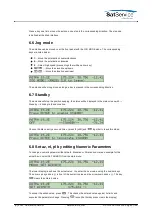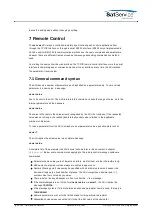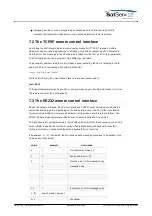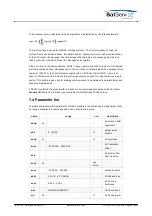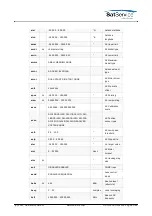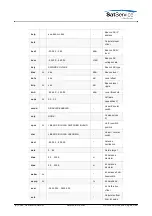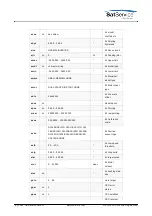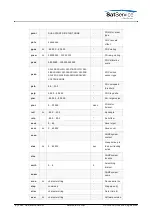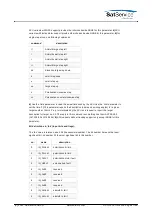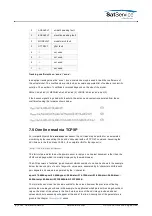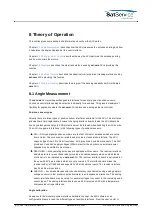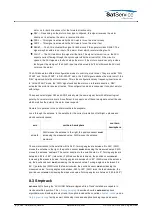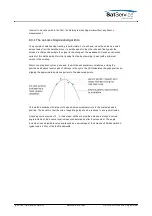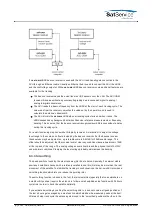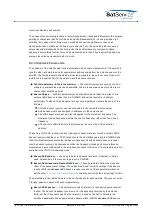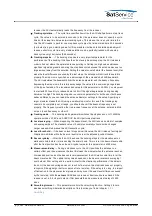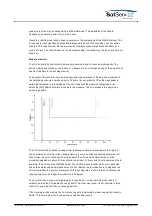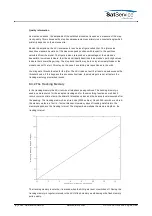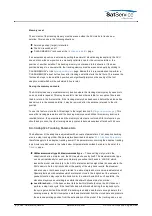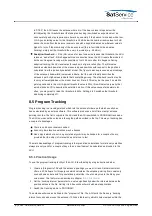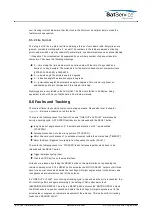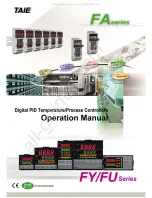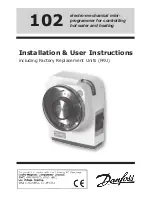
This section gives some background information about how the ACU works.
Chapter
8.1 Angle Measurement
describes how the ACU measures the antenna pointing and how
it calculates the angles displayed at the user interface.
Chapter
8.2 Pointing / Motor Control
describes the way the ACU performs the antenna pointing
and how it controls the motors.
Chapter
8.3 Steptrack
describes the step track method used by sat-nms ACUs providing this
function.
Chapter
8.4 Adaptive Tracking
describes the adaptive (orbit prediction) tracking method used by
sat-nms ACUs providing this function.
Chapter
8.5 Program Tracking
describes the program / file tracking capability built into the sat-
nms ACU.
The sat-nms ACU provides exchangeable interfaces for several types of position sensors.
Position sensor interfaces may be selected individually for each axis. This gives a maximum of
flexibility for application where the sat-nms ACU replaces an existing antenna controller.
Position sensor types
Actually there are three types of position sensor interfaces available for the ACU. The interfaces
principally are field-replaceable, however changing interface boards inside the ACU should be
done by skilled personnel only. ESD protection must be followed when handling the ACU boards.
The ACU is capable to interface to the following types of positional sensors:
SSI --- SSI type digital position encoders are the first choice for antennas which are setup
from scratch. They are precise, reliable and provide a standardized interface. The ACU
supports types from 13 to 24 bit resolution, both, gray coded and binary variants. The ACU
provides 5V and 24V supply voltages (200mA max) for the encoders, so external power
supplies may be omitted in most cases.
RESOLVER --- Many existing antennas are equipped with resolvers. The resolver interface
module permits to re-use these ready mounted and cabled sensors when an old antenna
controller is to be replaced by a sat-nms ACU. The resolver interface board is optimized for
the use with 2V type resolvers which are very common. The interface board drives the
resolver with 4Veff / 2000Hz and expects 2Veff at the sin/cos inputs. The resolver interface
has 16 bit binary resolution.
ANALOG --- For small antennas with reduced accuracy requirements using analog angle to
voltage sensors (in fact precision potentiometers) is an inexpensive alternative. The analog
sensor interface board may be set up for several voltages to connect to the commonly used
sensor types. The analog interface board uses a 16 bit precision ADC with a temperature
compensated voltage reference.
Angle calibration
Analogous to the modular position interface hardware concept, the ACU software uses
configurable drivers to read the different types of position interfaces. From the user's point of
(C) 2022, SatService GmbH
www.satnms.com
ACU-19V2-UM-2209 Page 51/65

